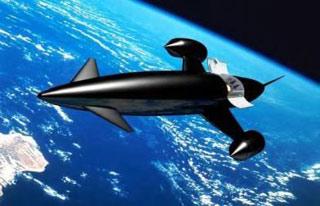
As man's space exploration ambitions are becoming insatiable, a demanding need has arisen to make space missions more affordable and reliable.
To date, space missions have been quite expensive undertakings – be it placing satellites in low-Earth orbit or sending astronauts to space or robotics for inter-planetary explorations.
According to estimates, US space agency NASA spent around 20 to 25 billion US dollars on its Apollo 11 Moon landing mission in 1969.
While executing manned missions is exorbitantly high, the cost of launching satellites also comes at a high price.
Hence, devising new ways and means for low-cost and reliable access to space has become the clear objective for all space-faring nations today.
Development of the Reusable Launch Vehicle (RLV) technology is a pioneering step in this direction. Such a launch vehicle, if developed successfully, will not only be a major technological breakthrough, but would also yield rich economic dividends for future space programmes.
A Reusable Launch Vehicle (RLV) refers to a vehicle that can be launched into space more than once. The vehicle can stay in orbit during its mission period and return to Earth after the mission’s completion. It can then be used to conduct subsequent space missions.
An RLV can be used either to launch payloads such as satellites (small/large) or it can ferry astronauts to space and bring them back.
The Reusable Launch Vehicle is different from an Expendable Launch Vehicle (ELV) system in the sense that it can be used for more than one space mission. An Expendable Launch Vehicle is capable of carrying payloads to space only once and its components cannot be recovered for reuse.
The space shuttles of NASA, presently used to ferry astronauts to space, are partially reusable launch vehicles. Each shuttle is reused after several months of refitting work for each launch.
Several countries, including US, Russia and India, are working on the concept of Reusable Launch Vehicle system. However, with several technological challenges involved, no major breakthrough has been achieved in this direction so far.
While designing an RLV, the key technological aspects to focus on could be its;
1. Composite, low-weight structure
2. A well-developed heat shield to protect the system from disintegration while re-entering Earth
3. Improved propulsion
4. Increased range
5. High payload carrying capacity
One of the conceptual designs for RLV is the single-stage-to-orbit (SSTO) vehicle. An SSTO reaches space orbit by using its propellants and fluids and does not abandon any hardware during its space journey to reduce weight.
However, as per rocket equation, an SSTO should be ultra light in its mass to achieve flight acceleration. Such a light structure in turn could make the vehicle very small which would mean low/small payload carrying capacity and hence, higher costs.
Another more reliable design structure for the RLV is the two-stage-to-orbit (TSTO) vehicle. In a two-stage-to-orbit (TSTO) launch vehicle, two distinct stages provide propulsion consecutively in order to achieve orbital velocity.
In the TSTO launch system, two independent vehicles operate. While the first stage vehicle can return to the launch site for re-use, the second stage can return after flying one or more orbits and re-entering.
This is usually proposed to be done by flying a compromise trajectory that keeps the first stage above or close to the launch site at all times, or by using small airbreathing engines to fly the vehicle back, or by recovering the first stage downrange and returning it some other way (often landing in the sea, and returning it by ship.)
The US’s effort for designing a fully operational Reusable Launch Vehicle is the development and testing of its X-37 space plane. The X-37 is a technology demonstration project that will test and validate technologies in the environment of space as well as test system performance of the vehicle during orbital flight, reentry and landing. Results from the X-37 will aid in the design and development of NASA’s Orbital Space Plane – designed to provide a crew rescue and crew transport capability to and from the International Space Station.
Indian space agency ISRO has conceived similar plans to design, develop and test a two-stage-to-orbit (TSTO) fully re-usable launch vehicle system. For this, a series of technology demonstration missions have been conceived.
 Previous Article
Previous Article Next Article
Next Article













The Indian Air Force, in its flight trials evaluation report submitted before the Defence Ministry l..
view articleAn insight into the Medium Multi-Role Combat Aircraft competition...
view articleSky enthusiasts can now spot the International Space Station (ISS) commanded by Indian-American astr..
view article